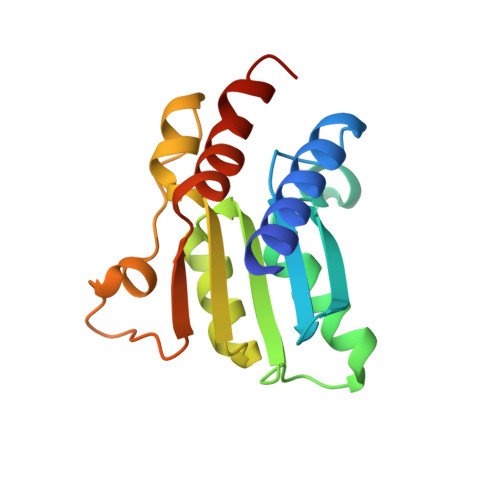The C-terminal loop of Arabidopsis thaliana guanosine deaminase is essential to catalysis.
Jia, Q., Zeng, H., Li, H., Xiao, N., Tang, J., Gao, S., Zhang, J., Xie, W.(2021) Chem Commun (Camb) 57: 9748-9751
- PubMed: 34477187
- DOI: https://doi.org/10.1039/d1cc03042f
- Primary Citation of Related Structures:
7DBF, 7DC9, 7DCA - PubMed Abstract:
Guanosine deaminase (GSDA) in plants specifically deaminates (de)guanosine to produce xanthosine with high specificity, which is further converted to xanthine, a key intermediate in purine metabolism and nitrogen recycling. We solved GSDA's structures from Arabidopsis thaliana in the free and ligand-bound forms at high resolutions. Unlike GDA, the enzyme employs a single-proton shuttle mechanism for catalysis and both the substrate and enzyme undergo structural rearrangements. The last fragment of the enzyme loops back and seals the active site, and the substrate rotates during the reaction, both essential to deamination. We further identified more substrates that could be employed by the enzyme and compare it with other deaminases to reveal the recognition differences of specific substrates. Our studies provide insight into this important enzyme involved in purine metabolism and will potentially aid in the development of deaminase-based gene-editing tools.
Organizational Affiliation:
MOE Key Laboratory of Gene Function and Regulation, State Key Laboratory for Biocontrol, School of Life Sciences, Sun Yat-Sen University, Guangzhou, Guangdong, 510006, People's Republic of China. xiewei6@mail.sysu.edu.cn.















